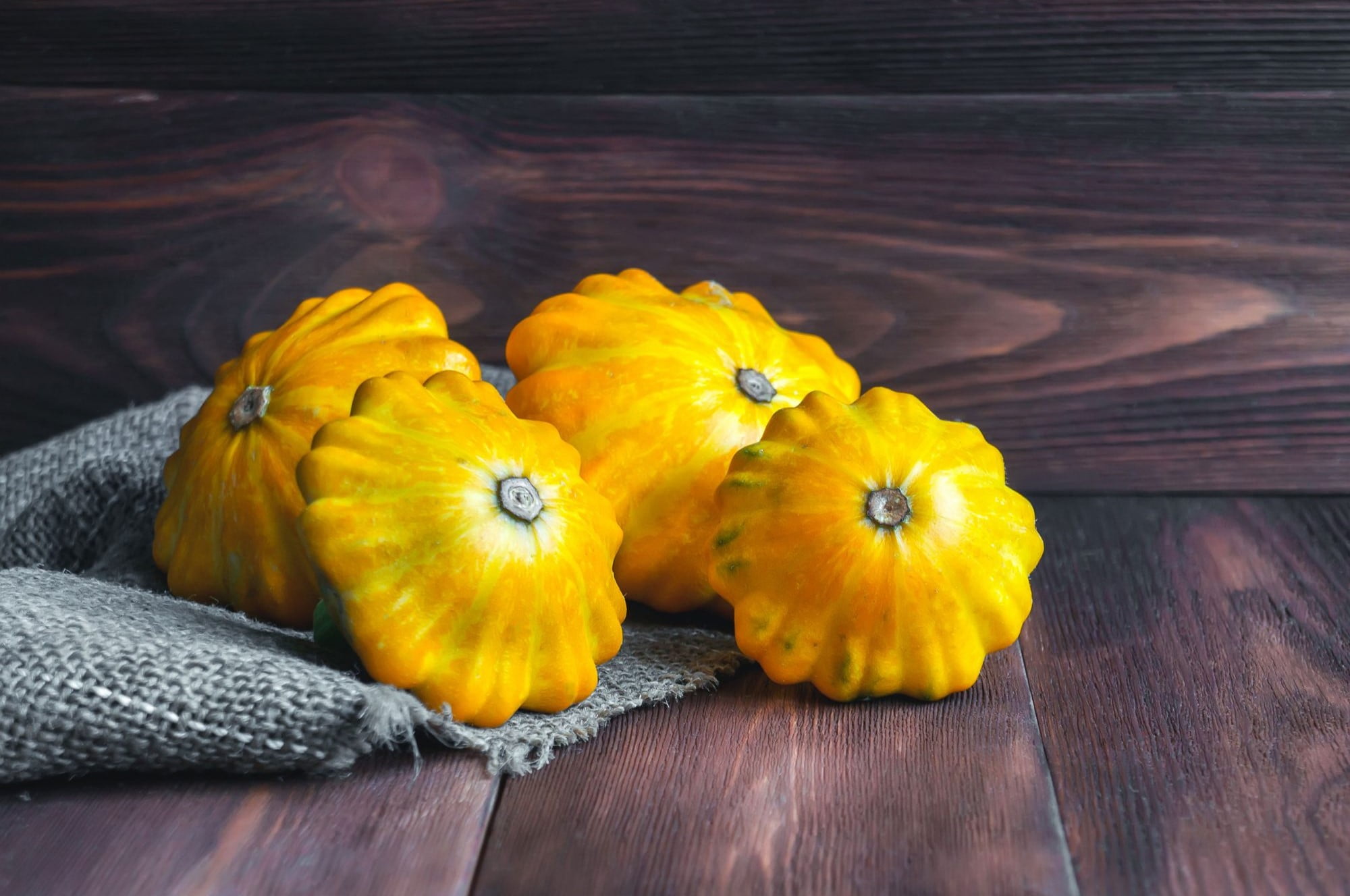
What is pattypan squash? This quirky vegetable, also known as scallop squash, looks like a tiny UFO. Its unique shape and vibrant colors make it a standout at farmers' markets. Pattypan squash comes in shades of yellow, green, and white. Despite its odd appearance, it's packed with nutrients and offers a mild, buttery flavor. You can roast, grill, or sauté it, making it a versatile addition to meals. Whether you're a seasoned chef or a home cook, this squash can add a fun twist to your dishes. Ready to learn more? Here are 20 facts about this fascinating vegetable!
Key Takeaways:
- Pattypan squash, also known as scallop squash, comes in various colors and is rich in vitamins A and C. It's low in calories and can be enjoyed raw, grilled, or stuffed with delicious fillings.
- Growing pattypan squash is easy with plenty of sunlight, well-drained soil, and regular watering. Its unique shape and vibrant colors make it a fun addition to any garden.
What is Pattypan Squash?
Pattypan squash, also known as scallop squash, is a unique summer vegetable. Its distinct shape and vibrant colors make it a favorite among gardeners and chefs alike. Let's dive into some fascinating facts about this quirky veggie.
-
Pattypan squash comes in various colors, including yellow, green, and white. Each color has a slightly different flavor and texture.
-
The name "pattypan" comes from the squash's resemblance to a small pan used for baking pastries.
-
This squash is part of the Cucurbitaceae family, which includes cucumbers, melons, and pumpkins.
-
Pattypan squash can be harvested when they are as small as 2 inches in diameter or as large as 5 inches. Smaller ones tend to be more tender.
Nutritional Benefits of Pattypan Squash
Eating pattypan squash isn't just a treat for your taste buds; it's also packed with nutrients. Here are some health benefits you might not know about.
-
Pattypan squash is low in calories, making it a great option for those watching their weight.
-
It is rich in vitamins A and C, which are essential for maintaining healthy skin and a strong immune system.
-
This squash is a good source of dietary fiber, aiding in digestion and helping to keep you feeling full longer.
-
Pattypan squash contains antioxidants that help protect your cells from damage caused by free radicals.
Growing Pattypan Squash
Interested in growing your own pattypan squash? It's easier than you might think. Here are some tips to get you started.
-
Pattypan squash thrives in warm weather and should be planted after the last frost of the season.
-
The plants need plenty of sunlight, so choose a sunny spot in your garden.
-
They require well-drained soil rich in organic matter. Adding compost can help improve soil quality.
-
Regular watering is crucial, especially during dry spells. However, avoid getting the leaves wet to prevent fungal diseases.
Cooking with Pattypan Squash
Pattypan squash is versatile in the kitchen. Whether you're a novice cook or a seasoned chef, you'll find plenty of ways to enjoy this vegetable.
-
You can eat pattypan squash raw, sliced thinly in salads for a crunchy texture.
-
It can be grilled, roasted, or sautéed, bringing out its natural sweetness.
-
Stuffing pattypan squash with a mixture of grains, vegetables, and cheese makes for a delicious and visually appealing dish.
-
This squash pairs well with herbs like basil, thyme, and rosemary, enhancing its flavor.
Fun Facts About Pattypan Squash
Beyond its culinary and nutritional benefits, pattypan squash has some fun and quirky aspects worth noting.
-
Pattypan squash is sometimes called "flying saucer squash" due to its UFO-like shape.
-
In France, pattypan squash is known as "pâtisson," which means "pie" or "cake."
-
This squash has been cultivated for centuries, with evidence of its use dating back to Native American agriculture.
-
Pattypan squash plants produce both male and female flowers, which are essential for pollination and fruit production.
The Final Slice on Pattypan Squash
Pattypan squash, with its unique shape and versatile uses, deserves a spot in your kitchen. Packed with vitamins and minerals, it’s a nutritious addition to meals. Whether you’re roasting, grilling, or stuffing it, pattypan squash offers a delightful taste and texture. Its low-calorie content makes it perfect for those watching their diet. Plus, growing pattypan squash in your garden is relatively easy, providing a fresh supply throughout the season.
From its historical roots to its culinary versatility, pattypan squash has much to offer. Next time you’re at the market, grab a few and experiment with new recipes. You might just find a new favorite vegetable. Remember, eating a variety of vegetables is key to a balanced diet, and pattypan squash can be a fun and tasty part of that variety. Enjoy the journey of discovering this unique squash!
Frequently Asked Questions
Was this page helpful?
Our commitment to delivering trustworthy and engaging content is at the heart of what we do. Each fact on our site is contributed by real users like you, bringing a wealth of diverse insights and information. To ensure the highest standards of accuracy and reliability, our dedicated editors meticulously review each submission. This process guarantees that the facts we share are not only fascinating but also credible. Trust in our commitment to quality and authenticity as you explore and learn with us.


